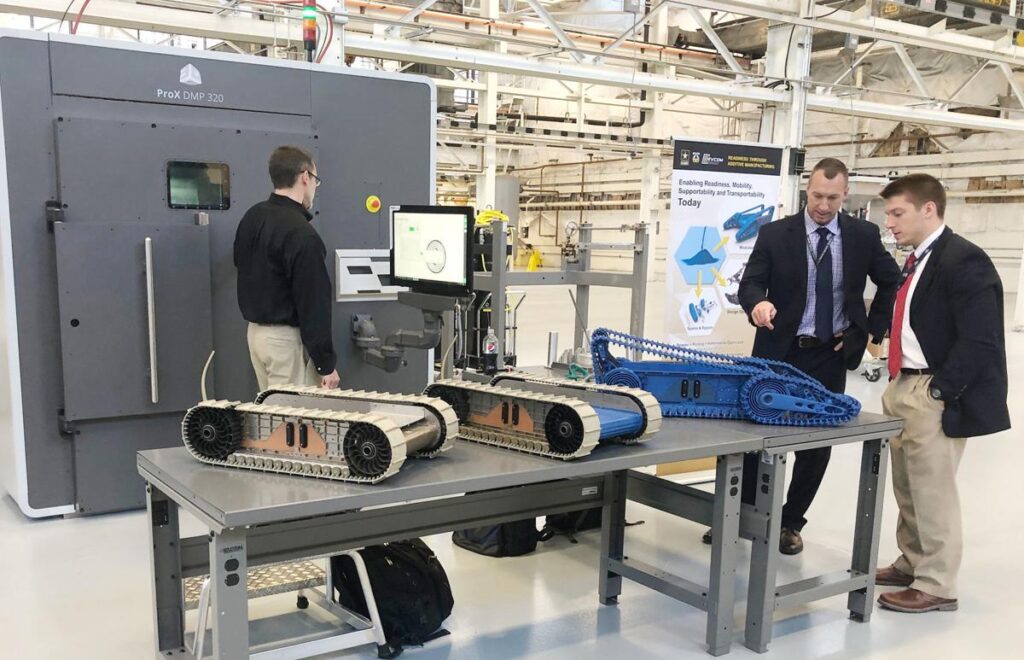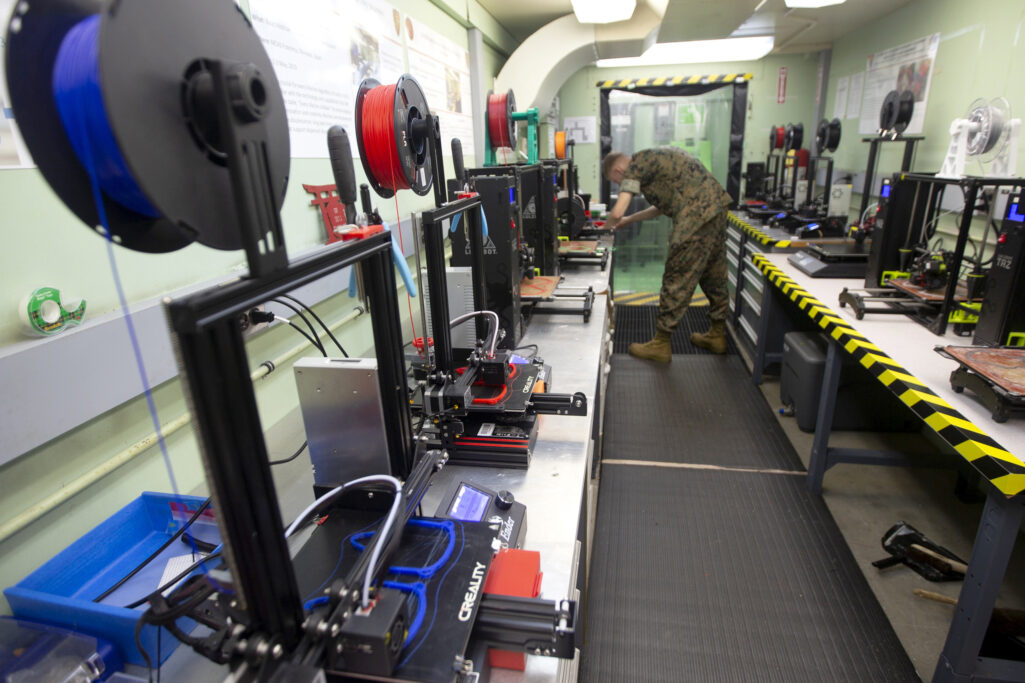In December 2021, TRG Senior Advisor Matt Herrmann was invited to publish a column in the Additive Manufacturing Coalition’s quarterly newsletter: The AM Advocate. Matt’s insights on additive manufacturing (AM) come from years of hands-on experience with clients aiming to deliver next generation technologies to the Department of Defense.
Learn more about Matt’s work on additive manufacturing.
Additive Manufacturing in DoD Remains Disruptive and Critical to the Future
Additive manufacturing remains a key disruptor in the Department of Defense’s (DoD) efforts to innovate faster. Leadership within the Department also maintains a steady interest in leveraging the potential of additive manufacturing (AM) to transform more traditional manufacturing processes. Across the DoD, and industry as a whole, it is being recognized that existing AM capabilities can address key priorities in manufacturing.
Additive Manufacturing and Supply Chain
The Biden Administration, like the Trump Administration prior, remains focused on addressing supply chain vulnerabilities across the whole of government and specifically within the DoD. In alignment with the Administration’s priorities, expect the White House to continue encouraging the exploration of AM solutions to address supply chain issues, particularly with regards to spare parts generation. Each of the military services remain focused on developing their own respective databases of spare parts. However, there are challenges. The services are in need of additional engineers to support these efforts, not to mention the long lead time for qualifying 3D printed spare parts. For its part, the Army is working to ensure that future acquisition contracts include a clause requiring identification of any system parts that could be 3D printed. This is an effort to ensure spare parts repositories are more usable in the future. Additive manufacturing has the true potential to address a number of supply chain challenges, particularly with older systems or systems where we rely on foreign private sector partners.
Additive manufacturing has the true potential to address a number of supply chain challenges, particularly with older systems where we rely on foreign private sector partners
Budgets
Future year’s defense budgets are expected to remain flat or slightly reduced. Although the FY23 budget will not be released until February 2022, there is already speculation about “difficult decisions” being made that include potential closure of bases and reduction of missions across the United States. This pressure of future defense budgets will continue to focus each of the services on adapting – or speeding up the adoption – of new and disruptive technologies. As such, expect cost savings to be a central driver in utilizing AM.
Additionally, over the past several years there has remained significant interest and support for AM in Congress. The Hill has added significant resources to AM projects across all the services and joint staff. Although programmatic adds will always be a reality of funding programs, there exists serious concern that simply relying on this strategy will not help the DoD fully realize the potential benefits of AM. Each of the services needs to better budget for some of these AM projects if they truly want to achieve AM’s potential. In tough budget times it is easy for DoD to cut out projects they expect to be popular on Capitol Hill in hopes that Congress will add the money back. However, there is a practical limitation to this strategy: Congress too has tough budget choices when money is tight and hoping for the money to come back is unnecessarily risky.
A case in point is the new jointless hull printer at Rock Island Arsenal. This effort has achieved and maintained very strong Congressional support from the Quad Cities Congressional delegation, especially from Senator Dick Durbin and Congresswoman Cheri Bustos. The Congressional delegation and the Army, aware of the potential pitfalls of this technology becoming part of the “valley fo death,” are working to integrate the largest metal 3D printer in history into existing acquisition programs. In the coming year, and using recently appropriated FY21 funding, the Army intends to invite some of the major prime contractors on the NextGen Combat Vehicle to see how they can incorporate the jointless hull printer and its capabilities into their programs and designs. This is an innovative way to hopefully embed funding for this capability in future years. This is also an effective way to ensure this new capability is not simply about building the largest 3D printer but rather a value-add to existing programs and potential new programs and projects as well.

DoD Coordination on Additive Manufacturing
DoD is attracting Capitol Hill’s attention more recently through its efforts to better coordinate AM activities across all services. The Department highlights this need for better and greater coordination in their own AM strategy that was released earlier in 2021, however there has been little progress in ensuring greater cooperations between the services. Differing focus areas – like the Army’s focus on expeditionary AM versus more of an industrial base focus by the Navy – highlight some of the challenges in coordinating a more unified utilization of AM. On a tactical level, without giving the Undersecretary of Defense for Research & Engineering some level of budget control over these coordinated AM efforts, there will be very real and significant issues in meeting DoD’s own strategic objective for better coordination. The legitimate concern with lack of coordination is that each of the services may duplicate efforts and not find efficiencies with existing AM projects and programs. On some level, to ensure greater cooperation the DoD should look to the JAIC model as a guide for cooperation but ensure some level of budget certification to force more cooperation and better resource allocation.
Conclusion
Additive manufacturing will remain a critical tool and enabler for the Department of Defense as a whole. There are both challenges and opportunities for AM in DoD over the coming year. Moreover, new areas for use of additive manufacturing, particularly in bio printing, may hold additional capabilities that can be utilized by DoD in other elements of their operations that provide even greater value. Therefore, the work of the Additive Manufacturing Coalition is of particular importance to ensure that the nation, and especially DoD, take full advantage of the opportunities that AM provides to support the national defense.
